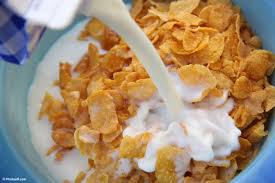A total of 33% of UK consumers already snack on cereal without milk throughout the day, with 5% - one in 20 - saying they do this daily, according to a Canadean survey of 2,000 UK adults.
Within this those aged 20-24 years old were the most likely to consume cereal throughout the day (59%), while 25-29 year olds were most likely to do this daily (18%).
Kirsty Nolan, an analyst for the market research firm, told BakeryandSnacks.com manufacturers should capitalize on this with new no-milk snack cereal products that could act as an alternative to crisps or confectionery in children’s lunch boxes.
She said the concept was a “win-win” for the struggling cereal sector since it held big opportunities but required, “little capital investment”.
Kellogg’s has already picked up on this demand in the US with the launch of snack-sized pouches of cereals Fruit Loops, Krave, Apple Jacks and Corn Pops.
'Why did I not think of this before?’
According to the research, 46% of those who snacked on cereal already during the day would like to see product launches that accommodated this snacking habit.
Nolan said despite this already “significant market”, the main challenge would be to convince more consumers that cereal can be enjoyed, “beyond the breakfast occasion”.
“Many consumers will not have thought to consume dry cereal, as such the launch of cereal as a snack could trigger the response: ‘Why did I not think of this before?’.”
“Prior to the launch of cereal in a snacking format, on-the-go consumption occasions were something that had to be planned by the consumer by actively taking a portion of cereal out with them in a sandwich-bag. This takes away from the convenient grab-and-go aspect, hence holding the consumption of dry cereal back.”
Niche vs. broad appeal
Nolan said one option would be to position the products as lunch box items available in value multipacks – something that may be perceived by parents as a healthier alternative to a packet of crisps or biscuits but with the same, “convenient appeal”.
She said once products became more established they could be sold individually in convenience stores amongst crisps and confectionery, where they may be perceived as a healthier impulse snack.
“For these purposes the ranges should be from fun, recognizable cereal brands that will appeal to both adults and children alike - let us not forget that these products could attract adults through their nostalgic ties to childhood.”
“In order to become a mainstream product, the cereal pouches would need to be positioned like a bag of crisps – an indulgent snack that provides energy and satiety.
“Clearly, there would be a niche for versions using healthier cereals to compete with the nuts and dried fruit snacking options, however this positioning will remain more limited as consumers temporarily dismiss their healthy eating intentions when they snack,” Nolan added.
Stand-alone category

She said although it was true milk-free cereals may give firms more NPD freedom in texture and flavor with the absence of their dairy accompaniment, manufacturers would have to be cautious, ensuring they provide consumers with their long-preferred cereal choice.
She added that milk flavored by cereal had already become a stand-alone category – with Canadean research revealing over 20% of consumers would purchase a beverage that replicated the milky remains left in a cereal bowl.
“Cereal as a snacking product could follow suit and create its own category, at this point there would be space for innovation in the market, with manufacturers launching new and exciting varieties of cereal snacks to further their presence and sales outside of the breakfast category.”
Breakfast, but not as we know it?
Asked if there was a danger that cereal could ‘lose its point’ if it moved too far from the breakfast table, she said: “Cereal is so ingrained as a breakfast product in the UK that I don’t believe it could leave behind this inherent association entirely – rather manufacturers would be benefiting from an additional revenue stream.”
She said the category was, “witnessing a stand-still” with no significant growth in recent years due to the increasing number of consumers skipping breakfast or seeking breakfast alternatives to their, “over-familiar cereal”.
“If manufacturers can expand their appeal beyond the breakfast table and into the rapidly growing snacking market (the global snacking market is expected to grow at a CAGR of 4.2% over 2013-2017), then this has to be a positive to cereal manufacturers.”
